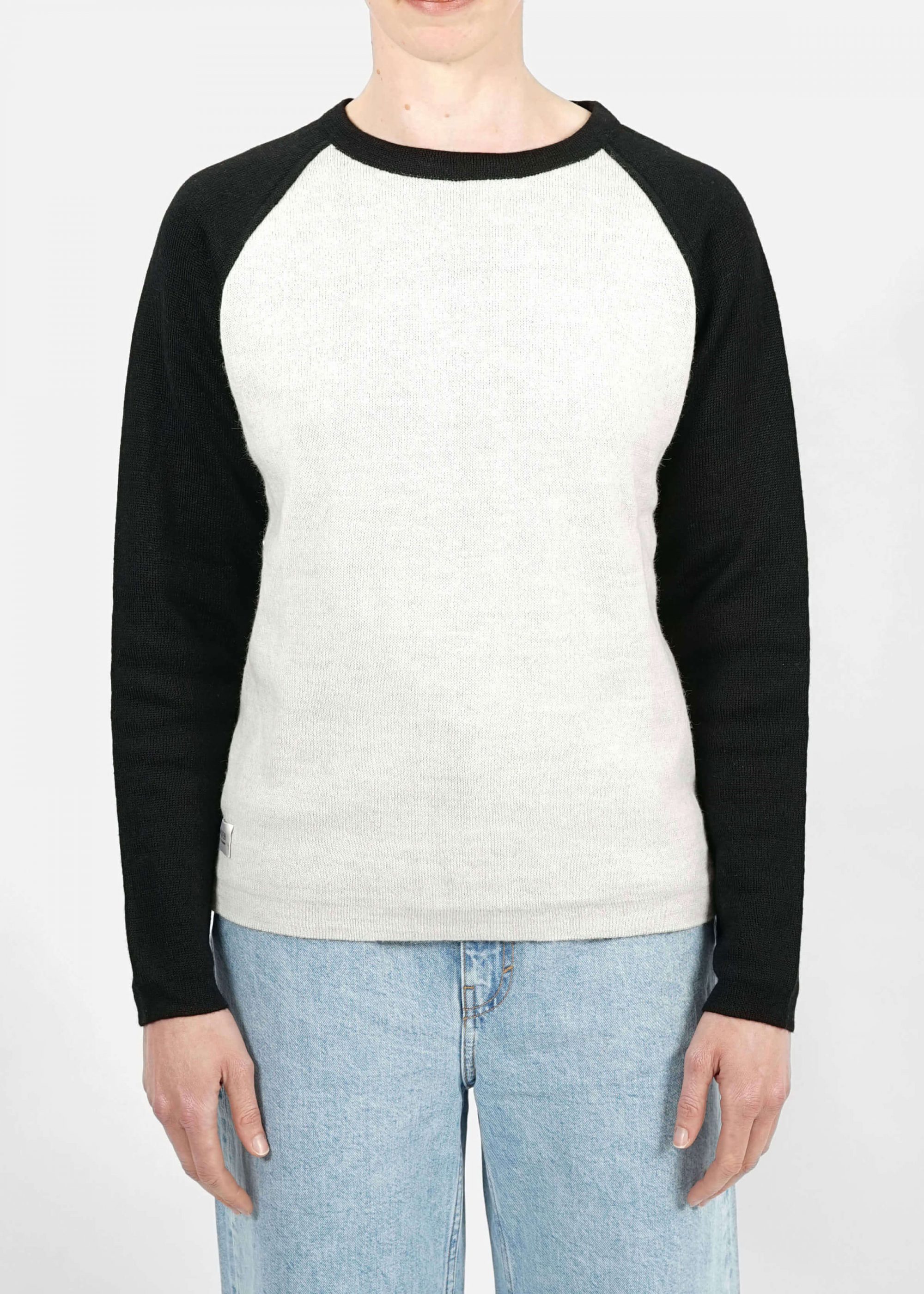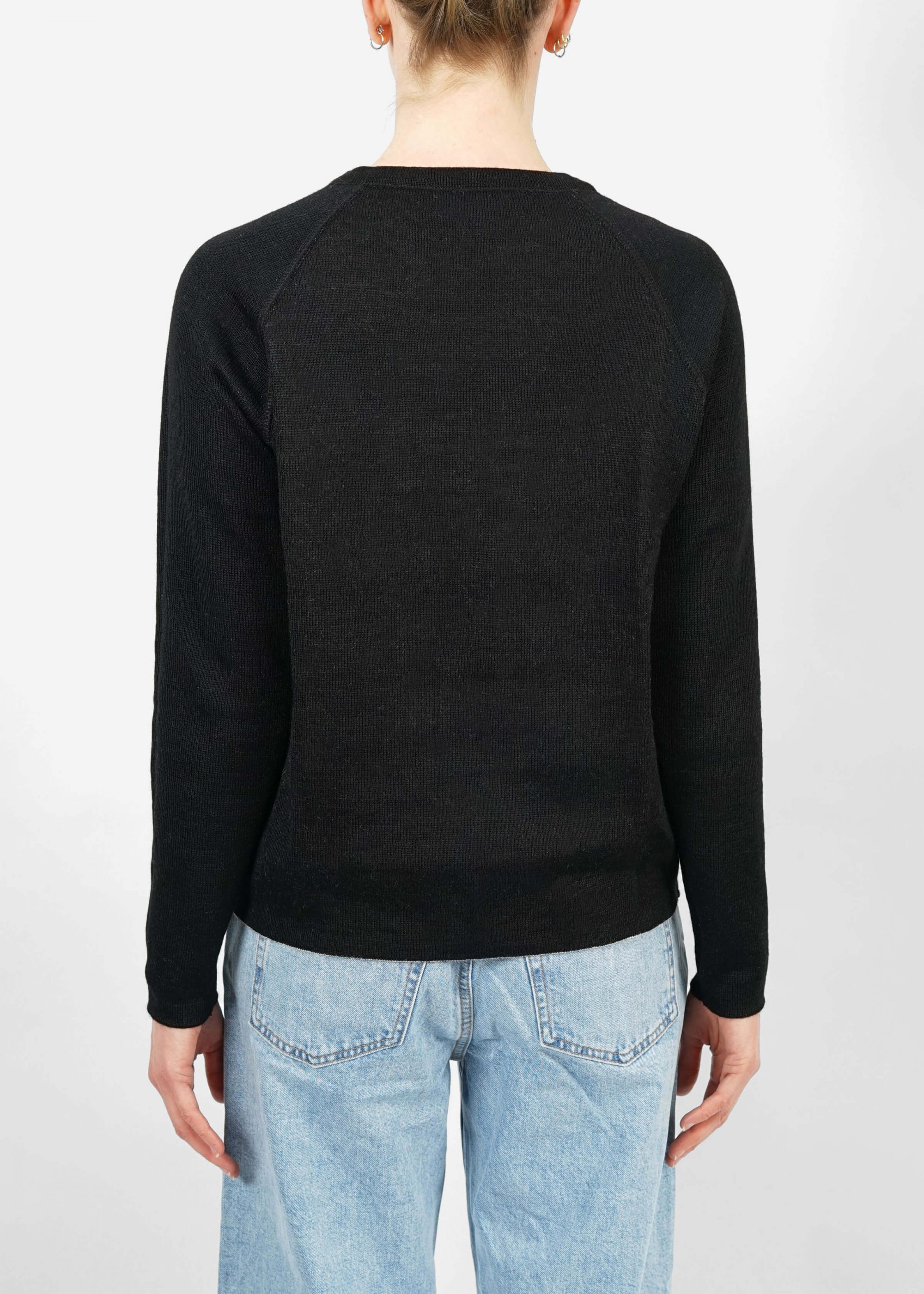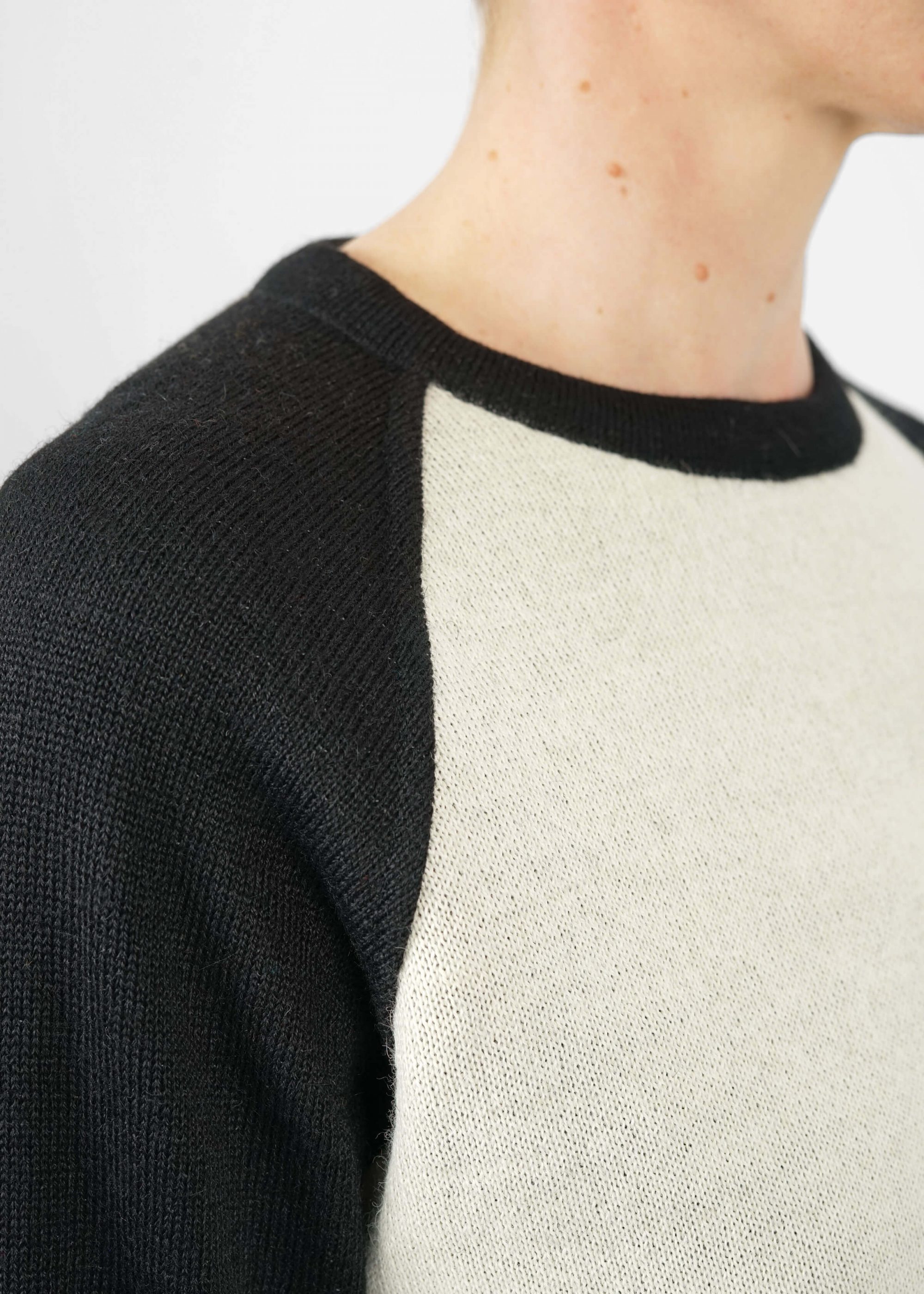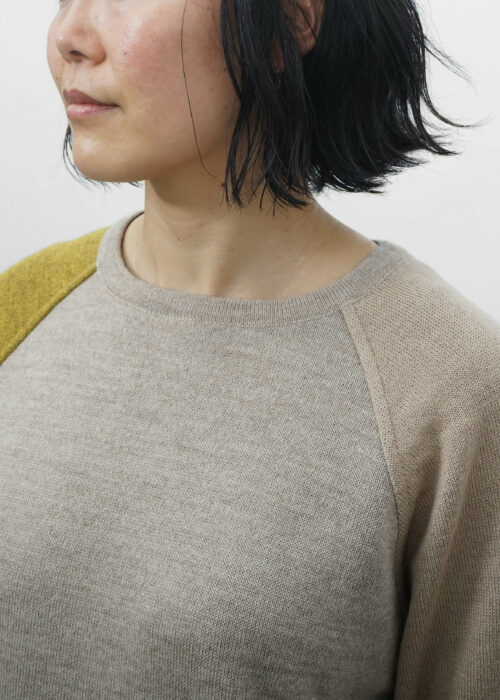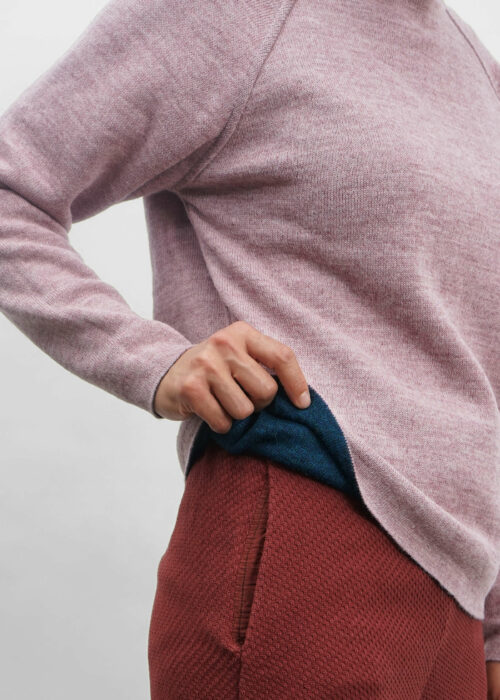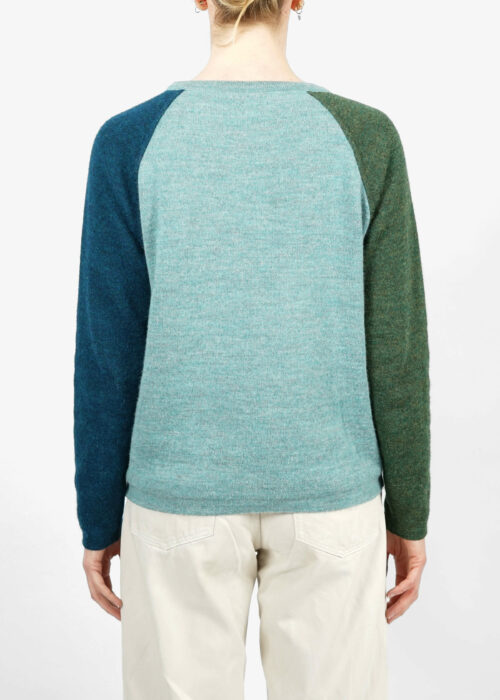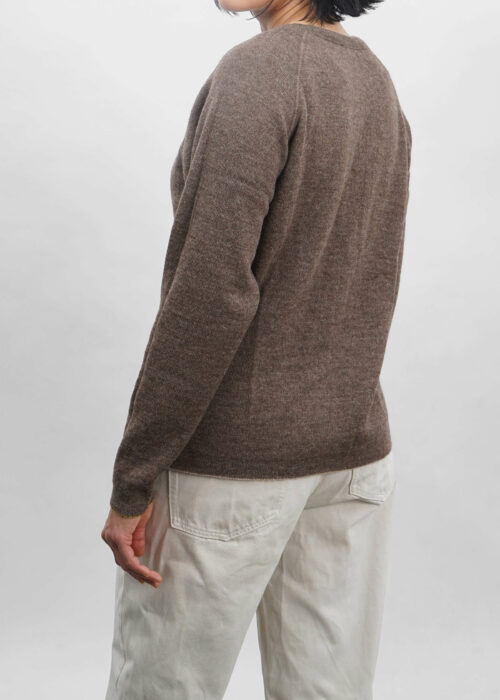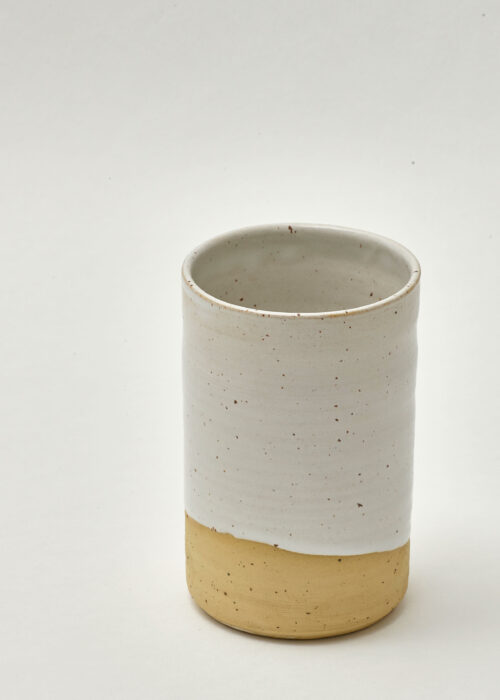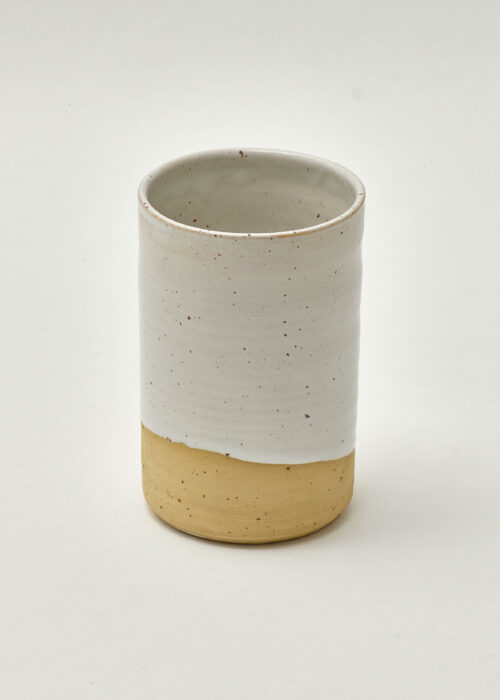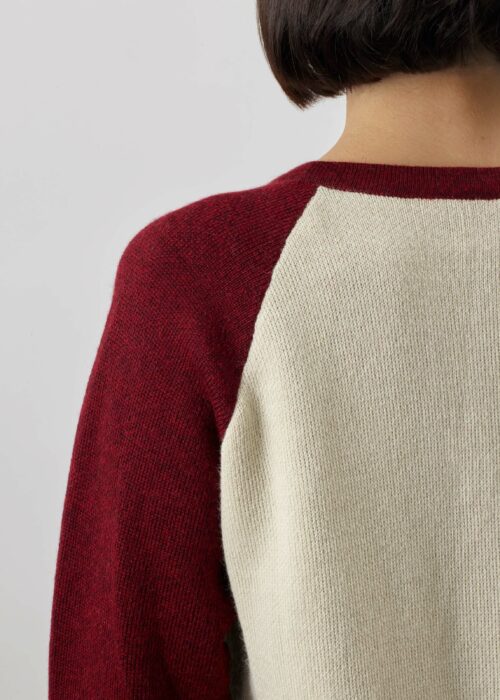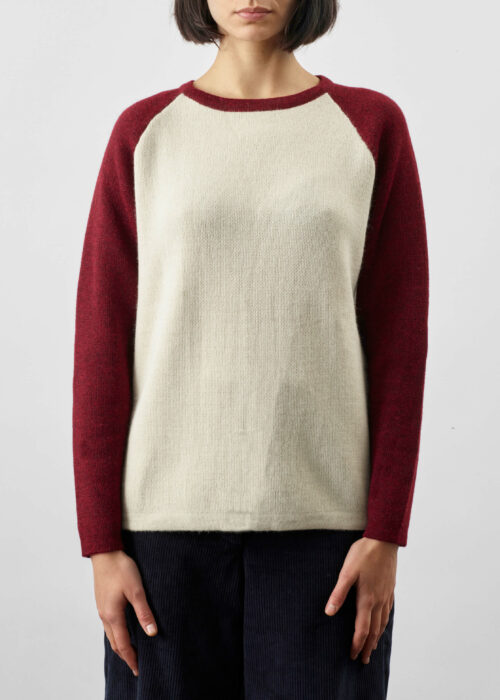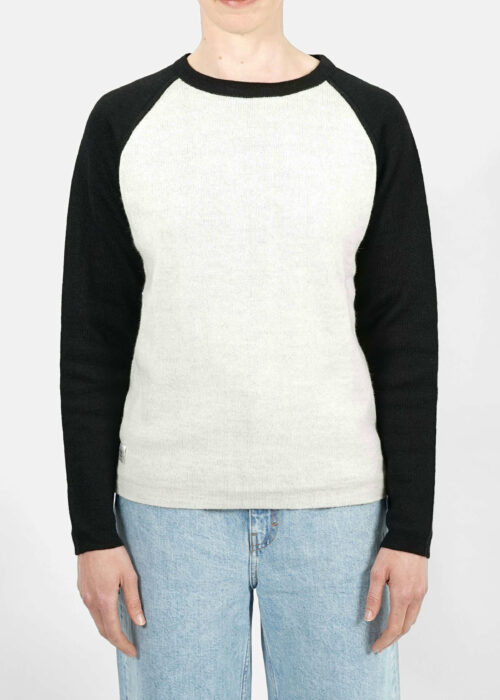
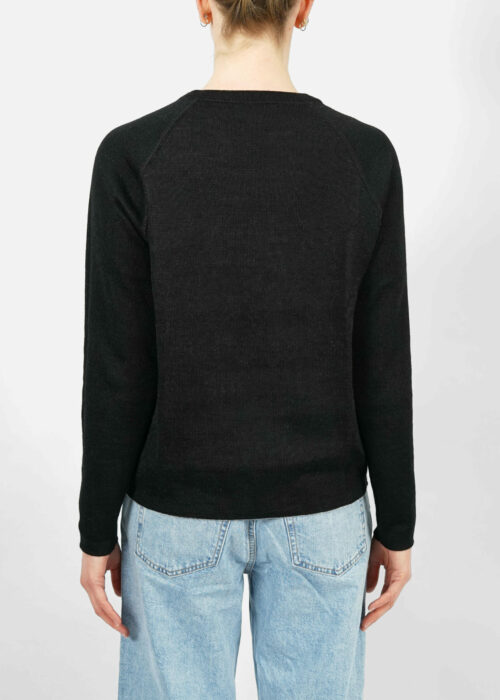
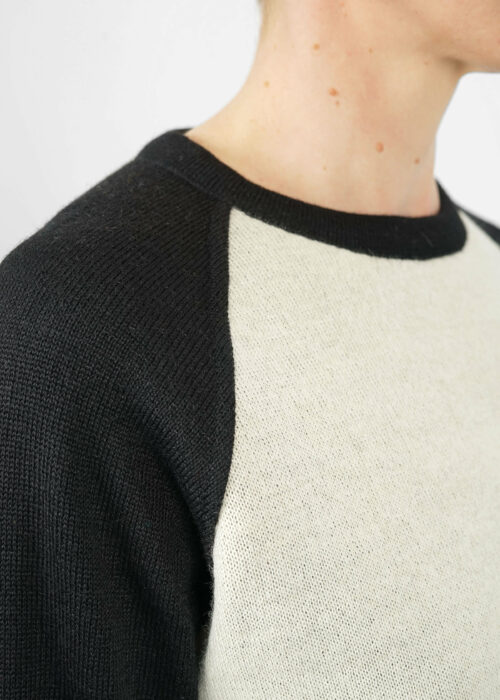
»Neo« Reversible Sweater Alpaca | Black Ecru
N° CKG4
Made in Peru
Description
»Neo« is a reversible alpaca sweater in black and ecru for women by REH (GERMANY), providing hypoallergenic and thermoregulating comfort. The distinctive 2-in-1 reversible knitwear design transitions this knitted women's sweater into a versatile everyday garment, as it can be easily switched from one classic black side to the reverse side featuring a more sporty "Ivy-League baseball look" with an ecru body and black raglan sleeves.
The sweater name, »Neo« means "New" in Latin and Greek and is an anagram of "One". The name is also reminiscent of the protagonist »Neo« in the science-fiction epic Matrix, who negotiates between the human and machine worlds. This transformation is reflected through the change of clothes, switching between all black and casual. The allegorical journey of Neo's self-discovery and liberation from the illusions of our "reality" raises profound philosophical and existential questions. Thus, »Neo« embodies the human ability to question reality and gain control over one's own destiny.
Details
- Reversible doubleface knitwear
- 2-in-1 Design for wearing on both sides
- Raglan sleeves
- Round neckline
- Folded knit bands
- Thermoregulating
- Allergy-friendly
Care
To ensure the longevity of our 100% natural alpaca knitwear, please follow these easy care instructions:
Avoid Washing
- Alpaca knitwear naturally neutralises odours, so washing is not necessary.
- Instead: Steam or steam iron the alpaca knitwear regularly
- Air by the window
- Hang in a steamy bathroom
- Place it in the freezer
- Use Organic Dry Cleaning Services
If Washing is required
- Hand or machine wash with cold water (30°C).
- Use organic Wool Detergent
- Lay flat to dry
- Avoid wringing
- Do not tumble dry
Stain & Pilling Removal
- Use Organic Dry Cleaning Services
- To treat stains, gently spot clean using palm oil free curd soap/ vegan gall soap and a damp cloth.
- Note: It’s important to thoroughly rinse out all the soap residue using water and a clean cloth, as any remaining soap can potentially cause additional stains
- Pilling refers to the formation of fiber nodules on the textile surface, typically occurring in areas with friction, such as where the arms touch the upper body or on the lower back. It takes a long time and a lot of friction for pilling to form on alpaca knits. Compared to finer Baby Alpaca knits, 100% alpaca is much less prone to pilling. It’s recommended not to use a pilling shaver too frequently.
Storage
- We recommend storing this knit piece flat or folded over the crossbar of a hanger
- The sweater is delivered in a storage box, which can be optionally used for storing
Repair
- Avoid sharp edges and velcro fasteners to prevent threads from being pulled
- If a thread is pulled, you can use our knitwear repair needle, in order to easily pull back the yarn to the back side of the knit piece or towards the interspace of the reversible knitwear
Size Guide
- The model is wearing size S. The corresponding womenswear size ranges from EU EU 36-40, UK 8-12, US 6-10
- Although the sweater is free of elastane, the 100% natural jersey rib knit technique provides extra elasticity, compared to the jacquard and reversible doubleface knitwear.
- Thanks to its natural elasticity, the sweater can expand by up to 1.0 cm, therefore you may opt for one size smaller.
To find the right size, please measure your own sweater and compare the measurements:
- Place your sweater on a smooth, even surface.
- For both length and width measurements, ensure that they are taken from the highest and widest sections of the sweater while it remains flat.
- To measure the sleeve (3) and sweater length (1), start from where the neckline band begins and measure down to the end of the sleeve hem.

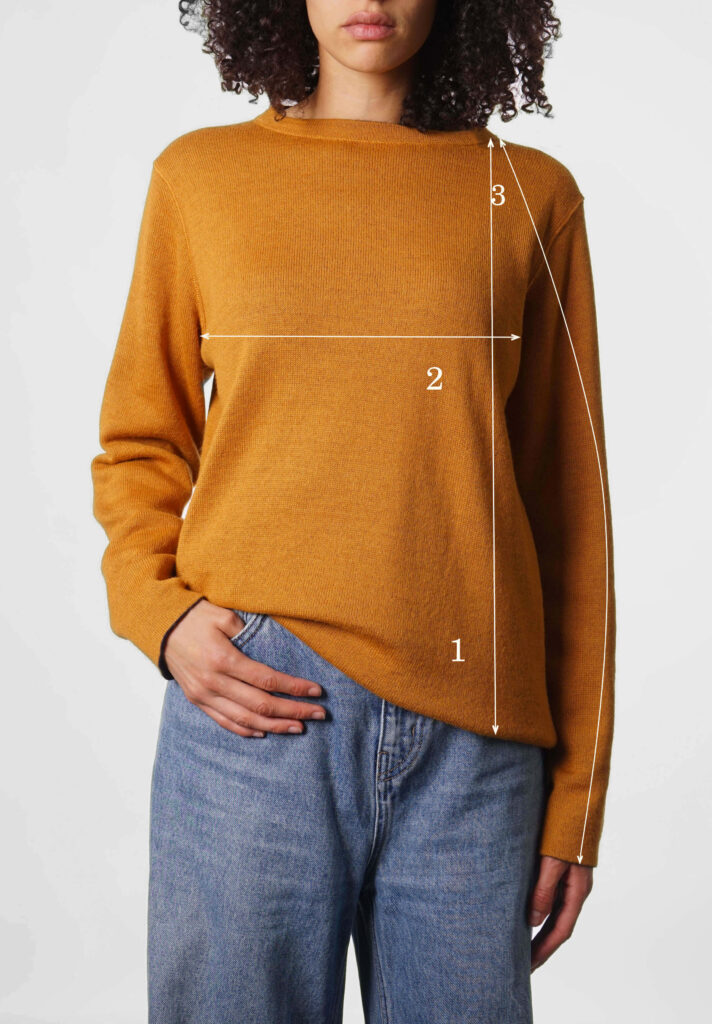
Note: Slight variations are rare, but they can occur due to production tolerances.
Philanthropy
Other colours
268 €
incl. VAT plus Shipping Costs

